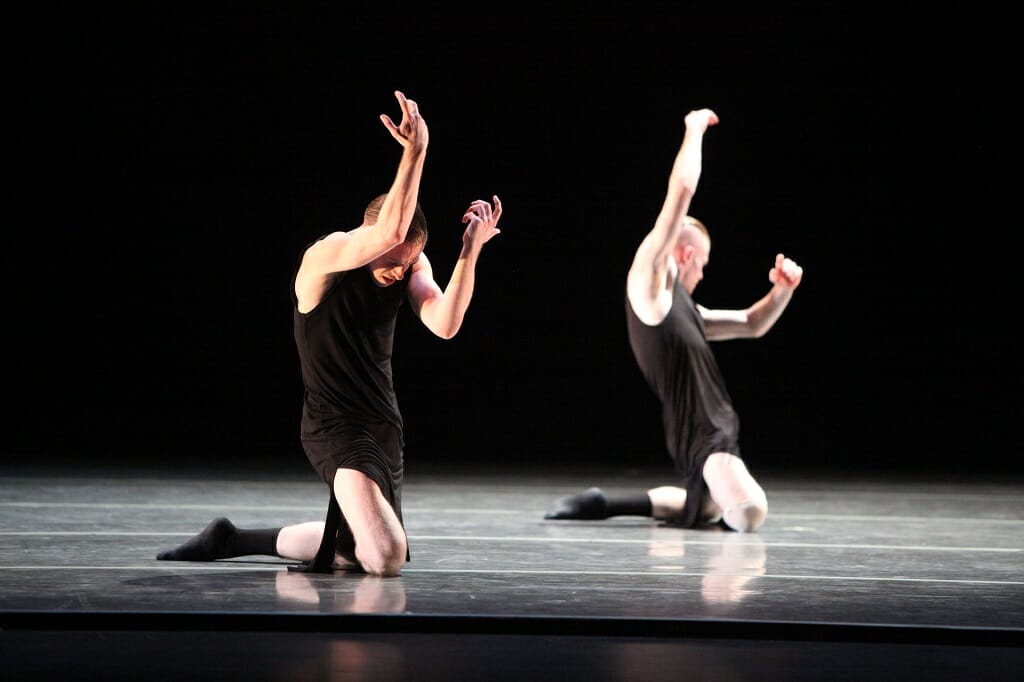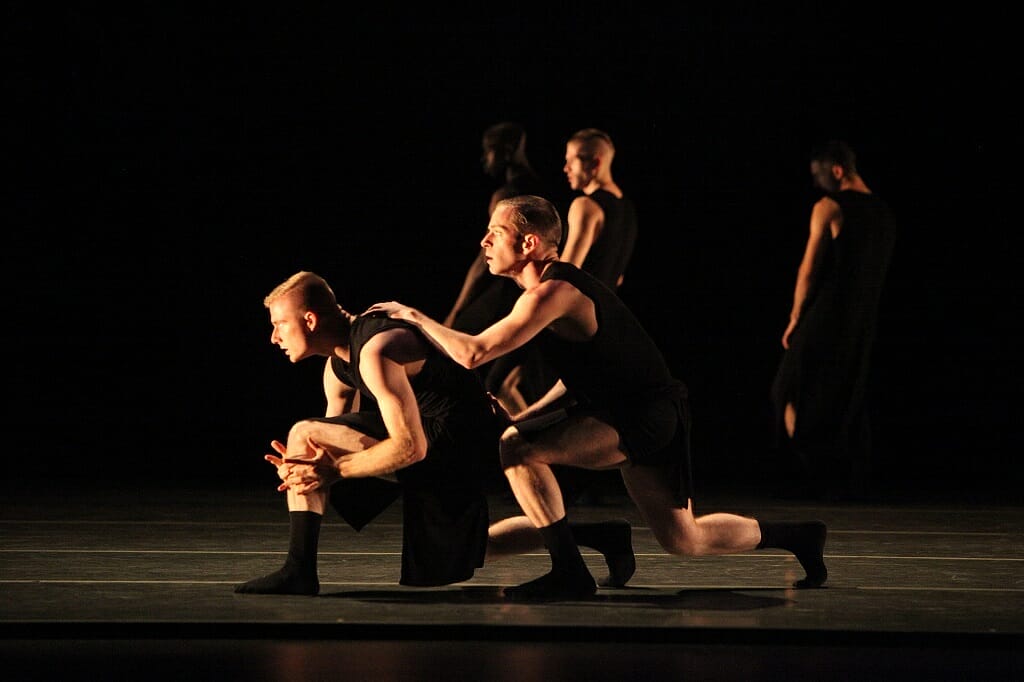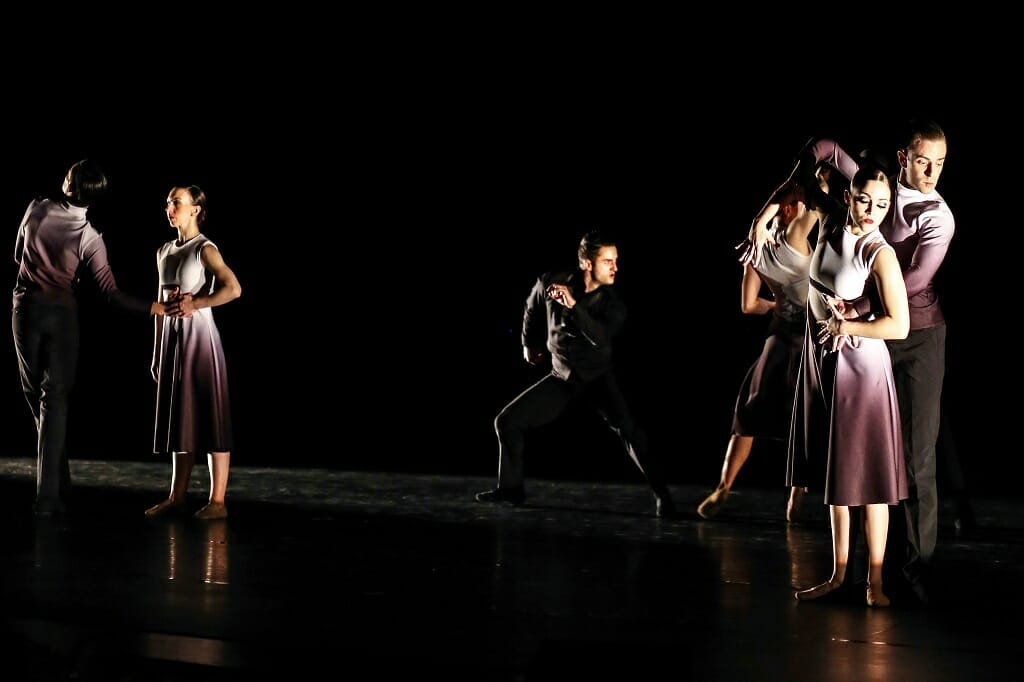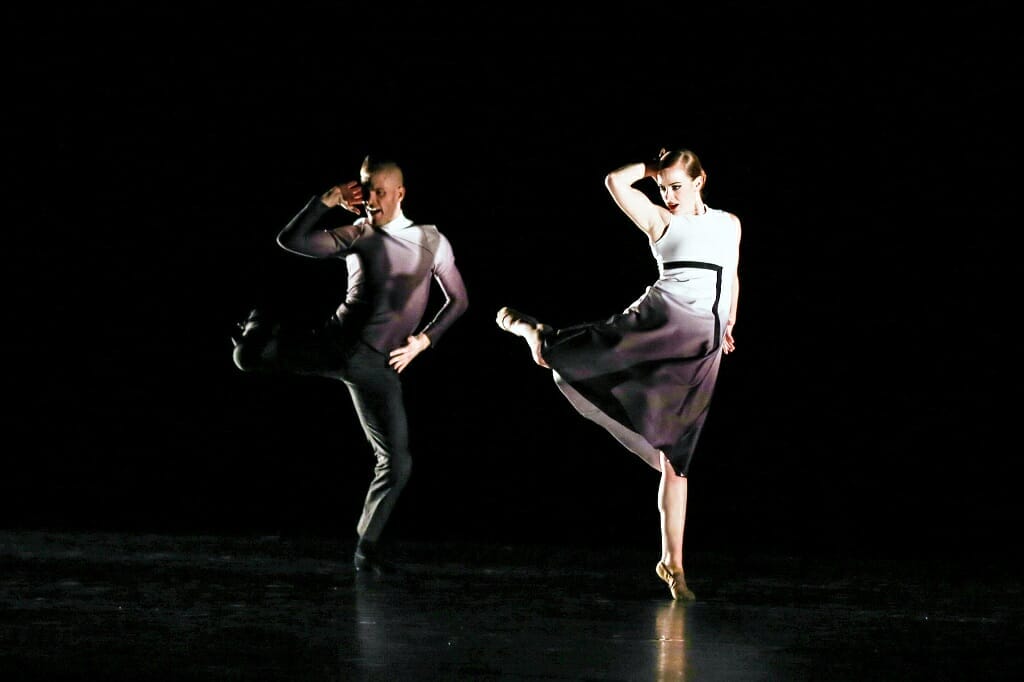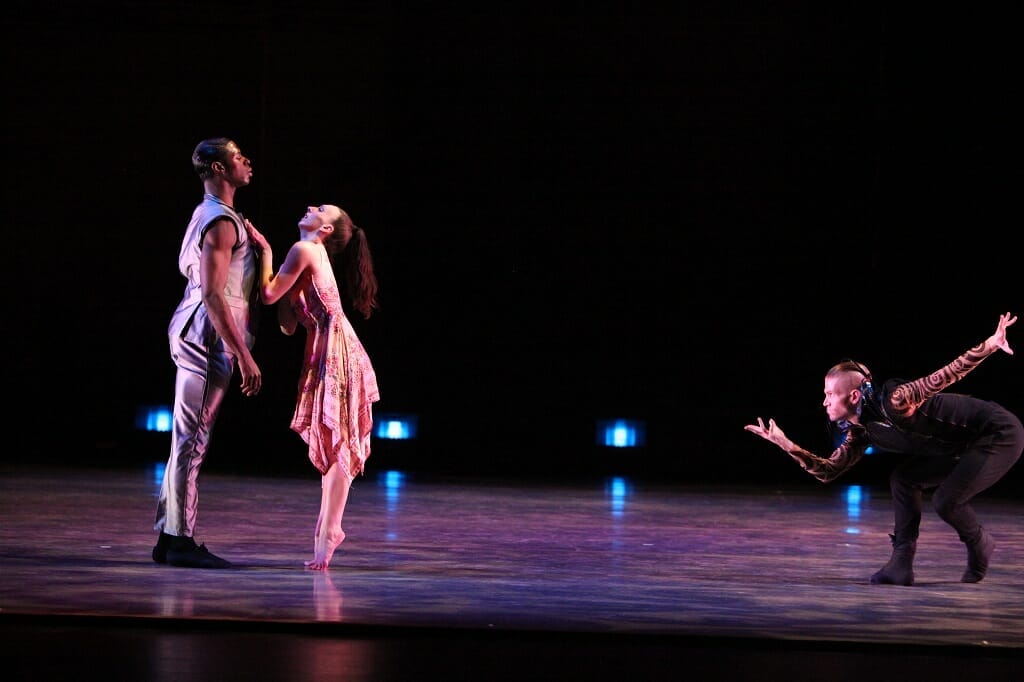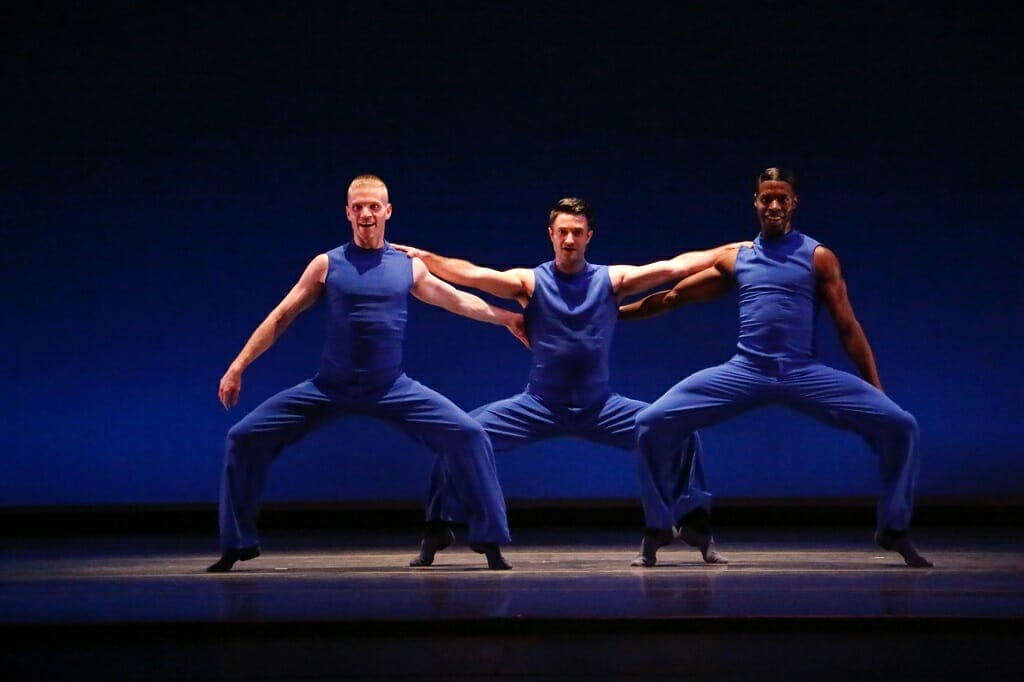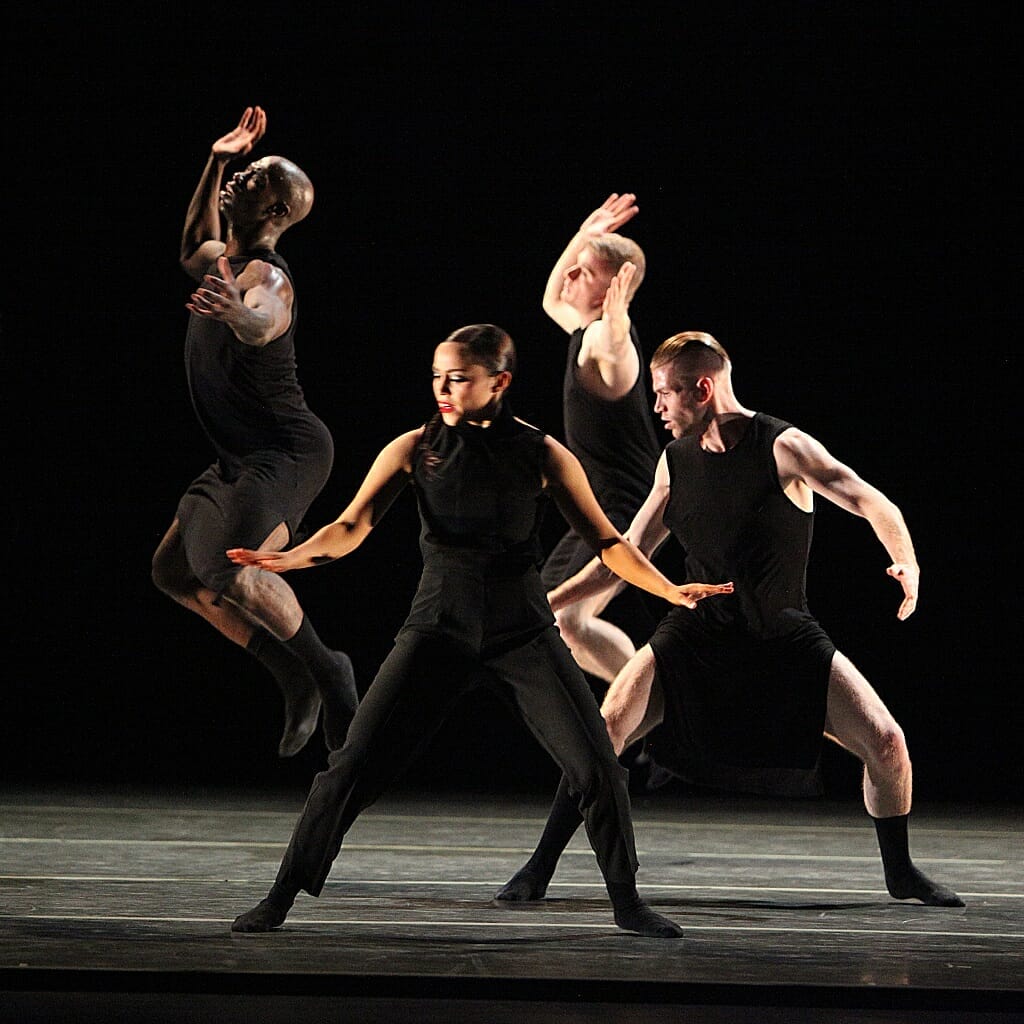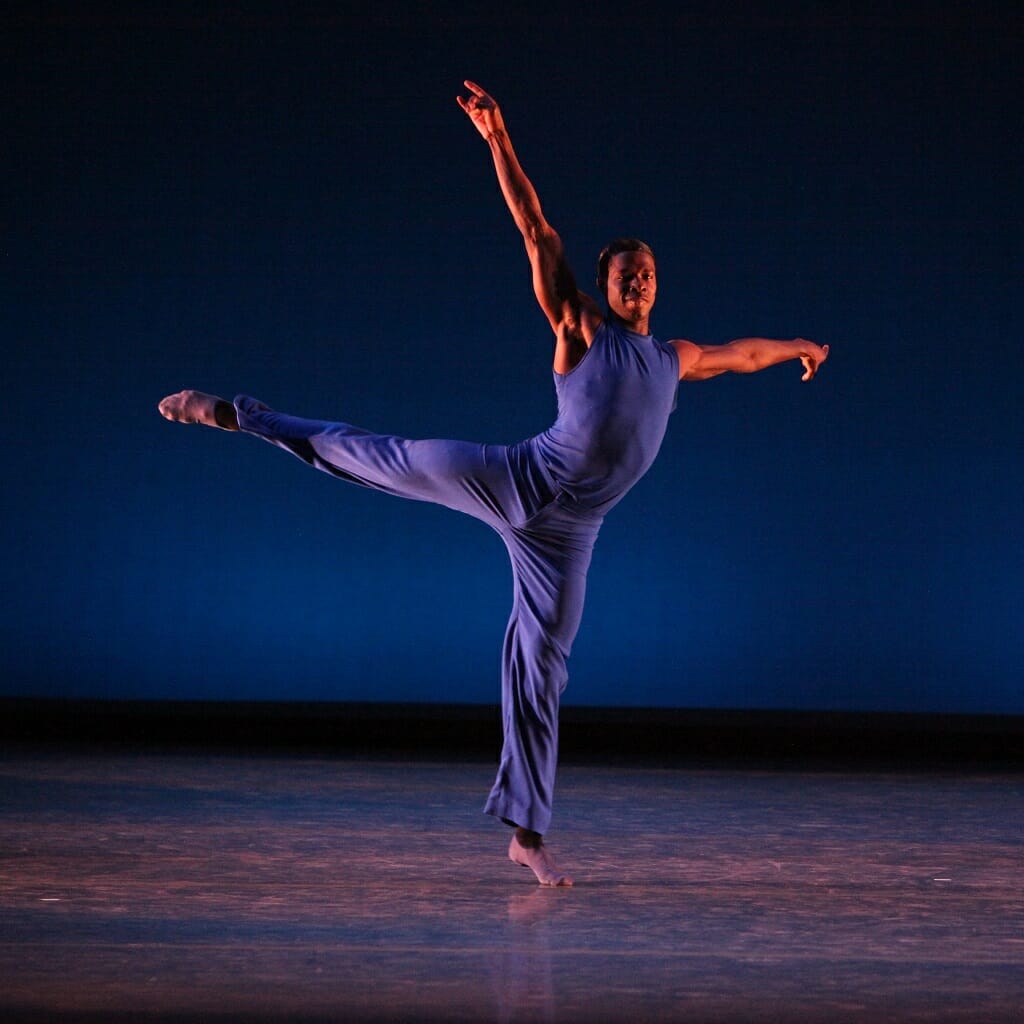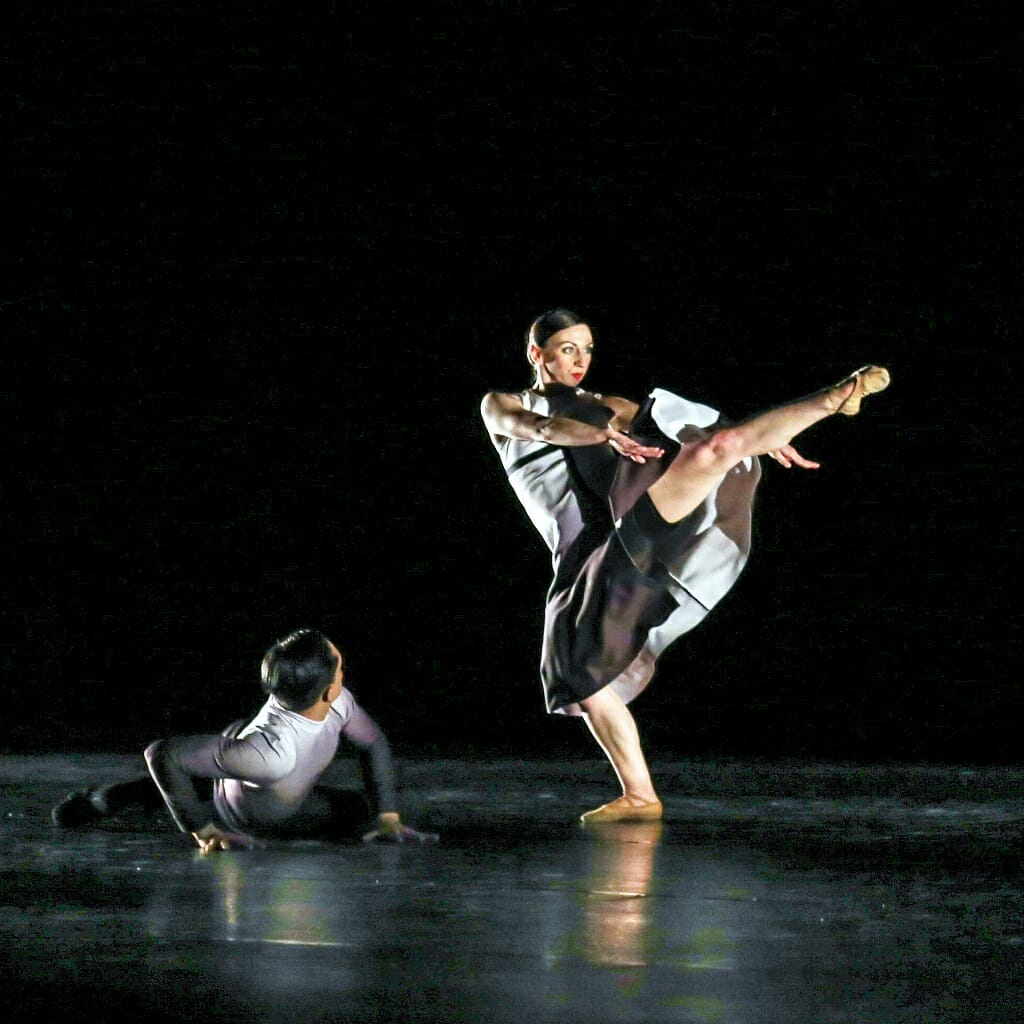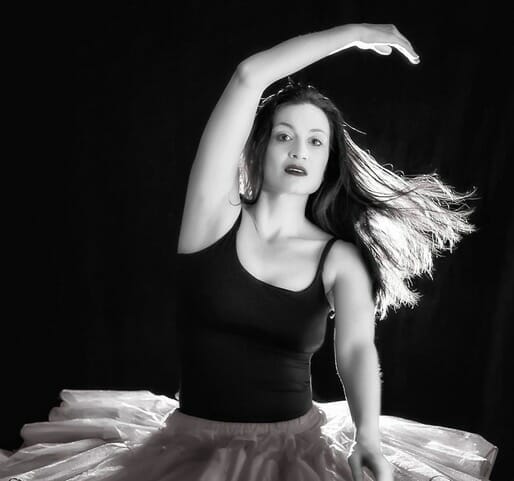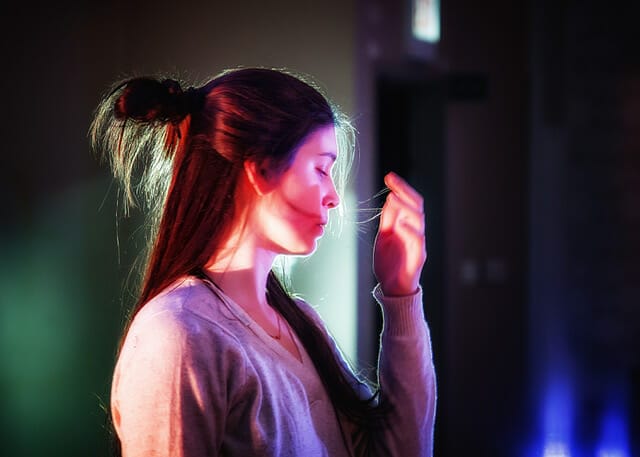Editor’s Note: The two choreographers—Ellyzabeth Adler (EA) and Sara Maslanka (SM)—who share their conversation about the Giordano Dance Spring Series performance talk about dance a lot— and explain dance a lot‑ to students of all ages. This is part of their mission as Chicago Danztheatre Ensemble, which Ellyzabeth founded and which Sara later joined, now serving as the organization’s Artistic Director. Both “teaching artists” they help Chicago’s teachers convey subject matter to students by re-enforcing curricula with dance. The other aspect of their work is called “performance with purpose”. Their enthusiasm for dance is the bedrock of Chicago Danztheatre Ensemble’s work—an enthusiasm Picture this Post is happy to include in our ongoing series—“Choreographers’ Eyes—Dancers Explain Dance”.
EA: Since this is our first review, I think to frame how we are approaching this. Dance is an experience. It is a feeling that overcomes you as you watch the performance as the dancer take the stage.
It is a visceral feeling. It is up to each person as to what they focus on, what they feel and what they see.
SM:This is one of the best parts of dance. You can be taken along for the ride or you can choose how you want to engage. Whether you like the piece or not, it will always provoke some sort of thought, question, idea, or inspiration.
Grusin Suite
EA: Grusin Suite is a striking piece visually from the opening section with the dancer in vibrant blue costumes and equally vibrant lighting. It was as if the dancers stepped out of the scrim and onto the stage. Every dancer showed great skill, grace and beauty.
Through the four sections, the dancers seem to capture each moment in the music. The choreography reflected the piano score's deep, dark and melodic tonal qualities. At times this piece focused my attention on the duet that the choreographer has with the lighting designer. Grusin Suite’s choreography— bold and elegant— is framed and its mood is set through the lighting. In section three, Meaghan McHale and Ryan Galloway’s duet flowed showing the strength and agility required for Frank Chavez’s choreography.
The concert celebrated McHale’s 10 years of being a member of the company. At moments she effortlessly flies in the air, sustains a turn like a Degas statue and makes you feel like she is only performing for you.
SM: I could not tell who drove who in this piece; the piano or the dancers. Both effortlessly intertwined as they cooly played within the melodies or hit the specific rhythms. The smooth and sharp angles of the lights felt hypnotizing. Then the shift to softness in section three with Meaghan and Ryan felt like a deserving exhale. All the sharpness of the previous angles and lines maintained, but a sudden flow that wasn’t there in the previous sections or in the closing fourth section. Yes, it was stunning display of strength and agility. I also appreciated how the angles of lighting made the performance a trio. The lighting almost reminded me of piano keys. I also observed the lighting’s influence of spatial use and mood control.It was truly a beautiful balance of tension and coolness.
Divide Against
EA: Divide Against is described as capturing the physical response to an uncontrollable reaction.The men wore black shapeless dresses and the women were in black pants and tops,which of course divides your attention to the gender of the dancers. In dance, the strength and power of female dancers is usually at the cornerstone of most choreography. Playing with flipping the gender roles is not totally new to dance,;there is a rich history of it. In this performance though, as we were watching Divide Against, the play with gender really sparked this awareness in me, maybe partially because of the current political climate —fighting over who can use which bathroom and also knowing that while women are fierce on stage, we still have so much more to do in our global world. Maybe the choreographer wasn’t planning on me having this thought throughout but this is what watching dance does—it sparks feeling and thoughts.
SM: The movement qualities of both men and women clearly demonstrated the divide Peter Chu was after. Gender norms were not a thing in this piece; the costumes clearly enhancing that thought process. The females embodied strength with their structural, repetitive motions. Meanwhile, the men embodied fluidity and grace. Listening to the sound, I felt the futuristic vibe.
After watching the piece, I kept thinking about the divide. The opening of the sound tells us we must divide ourselves. It kind of reminded me of an episode of Black Mirror. I wonder why must we divide ourselves, but then again, taking from this piece and the current political climate, maybe we’re not ready to be completely unified because that would require that we expose our true selves, flaws and/or strengths.
The Man That Got Away
SM: This was my first time watching Sherry Zunker’s piece, “The Man That Got Away.” Almost immediately, you could feel the buzz in the audience; the crowd knows and loves this piece. When Sherry was choreographing the piece in 1990, I love and appreciate the last minute inspiration to add the motionless man. After all this time, I understand why that addition made all the difference and added the needed twist. The contrast between motionless and motion increased the tension and desire. Add the spotlight over the motionless man, he feels almost behind some sort of veil as she acts out her lustful daydream. Furthermore, Ashley Downs’ and the evening’s motionless man, Kevin McGirr, both fully committed to the performance. I also appreciated that Ashley had the opportunity to wear the original costume by Jordan Ross made in 1990; it made the performance that more special.
EA: I have seen this piece at least three times. Here is a video that Sherry Zunker has shared with Picture this Post readers.
It is a classic and the adagio is always the hardest to perform. Ashley’s performance captured the emotions that we all have felt, letting go of the one you wish you would have went for. This is the power of dance. We feel, we relate and we dance in our seats. Dance is a gift and I’m happy that Sherry gave “The Man That Got Away” as a gift not only to the company but to Chicago as well.
Lost In this World
EA: Giordano is a 50 year-old jazz company— one of only a few dance companies to reach this milestone. Lost In This World choreographed by Liz Imperio is a story dance told in four parts featuring Meghan McHale as a woman who is tempted by the leading men, Devin Buchanan and Adam Houston, She is tempted by the devil and the world around her that she is stuck in.
This piece got me wondering, what exactly is jazz dance. There were moments of hip-hop, ballet, latin infused movements and every dancer in the company invoked the spirt and energy of the contemporary music score featuring Ed Sheeran.
SM: I agree. Watching this piece, I wondered about how we define contemporary. I thought about the difference in music from Sherry Zunker’s piece, “The Man Who Got Away,” to hearing music from today on the formal dance concert stage. We literally spent the evening watching jazz evolve before our eyes. But that’s what happens. The form grows and evolves as more individuals engage and add their cultural imprint to the original codified form. All dance forms experience this sort of evolution and expansion.
To sum up—Giordano Dance Chicago’s Spring Series proved to be a thought-provoking evening of jazz and its evolution throughout the decades. The evening highlighted the strength of designers (sound, costume and lighting) working in tangent with the choreographer to achieve emotion, mood, shape and spatial restriction. It also highlighted the strength, agility and fierceness of the female dancer on stage, as seen in Giordano veteran, Meaghan McHale. No matter the age of the work, the works all maintained a relevancy to our current climate through the use of movement, sound, lights and costuming.
To learn more about Giordano Dance and their upcoming performances visit their website.
Read Sara Maslanka’s comments about the MCA exhibit “Merce Cunningham: Common Time”
Editor's Note: This article is part of extensive Picture This Post coverage of dance and music related to Merce Cunningham. See also--
- MEET MERCE! And see CUNNINGHAM THROUGH CHOREOGRAPHERS’ EYES
- Brad Robin review of EVENTS and MUSIC FOR MERCE
- Review of Ballet de Lorraine in a Merce program
- AND - CHOREOGRAPHERS' EYES—DANCERS EXPLAIN DANCE
Learn more about dance by seeing dance through dancers eyes in the Picture This Post series, “Choreographers’ Eyes - Dancers Explain Dance”. Watch this video preview of the story here—
Find more Picture This Post dance reviews in the latest roundup — CHOREOGRAPHERS WE LOVE. Also, watch a short preview video here —
About the Author:
Ellyzabeth Adler is a multidisciplinary artist working in the genre of "Tanztheatre," weaving together theatre, dance, film, spoken word, and music. As founder of Chicago Danztheatre Ensemble (CDE) she has dedicated herself to forming partnerships with artists of all genres and generations to create unique, dynamic, engaging, and meaningful ensemble performances.Ellyzabeth earned a BFA in Performing Arts, with a minor in Broadcast Journalism at Roosevelt University. In 2000 she earned a Masters of Arts in Directing and Movement; as her thesis she developed CDE’s techniques for creating multidisciplined, kinesthetic, and socially engaging theatre. She has created and/or collaboratively adapted, directed and choreographed 10 full-length works including: T.S Eliot’s The Wasteland; Ever Your Own; Edgar; The Yellow Wallpaper; This Is Not A Pipe; Bindis and Bruises; and Touch and Mirrors - one-act plays based on the work of the Persian poet, Rumi. She has also created and choreographed over a dozen concert-length works focused on women’s issues, the female body, suicide, the human condition, and pathways to enlightenment.
Sara Maslanka was named Chicago Danztheatre Ensemble’s Artistic Director in August 2015 after originally joining CDE as a Teaching Artist and Ensemble Member in 2014. She is a performer and choreographer that loves to blend dance, theatricality and comedy to her works. Sara values a collaborative process that incorporates research, discussion and play. When not performing or creating work, Sara is a teaching artist based in schools across Chicagoland and a budding dance science researcher. Sara received a Bachelor of Arts in Dance and Pedagogy from Columbia College Chicago and a Masters of Science in Dance Science from Trinity Laban Conservatoire of Music and Dance in London, UK. Consumed, premiered March 2017, marked Sara’s debut work as Artistic Director.

